Flat Plate Solar Collector, Conjugated Heat Transfer (CHT)
$160.00 Student Discount
- The current CFD Analysis simulates the Flat Plate Solar Collector Conjugated Heat Transfer via ANSYS Fluent software.
- We have designed the initial geometry using SpaceClaim software and created the mesh on this geometry using Fluent Meshing software.
- The mesh type is polyhedra with 1868457 cells.
- Conduction and Convection phenomena are involved in this simulation.
- The Discrete Ordinate Radiation model is used.
- The Energy Equation is enabled to capture the temperature.
To Order Your Project or benefit from a CFD consultation, contact our experts via email ([email protected]), online support tab, or WhatsApp at +44 7443 197273.
There are some Free Products to check our service quality.
If you want the training video in another language instead of English, ask it via [email protected] after you buy the product.
Description
Flat Plate Solar Collector Conjugated Heat Transfer (CHT), ANSYS Fluent CFD Training
Introduction
Flat Plate Solar Collectors (FPSC) are widely used in the solar industry to convert solar radiation into thermal energy. The efficiency of FPSCs depends on various factors, including the design of the collector, the materials used, and the collector’s location.
In this simulation, we investigate radiation’s effects on the water’s temperature passing through pipes in an FPSC located in Doha with a 15-degree tilt angle using ANSYS Fluent software.
The geometry of the FPSC was designed using SpaceClaim software and meshed using Fluent Meshing software in Polyhedra type. It must be noted that the whole number of elements created is 1868457.
Flat Plate Solar Collectors Methodology
The simulation was conducted by solving Navier-Stokes equations for fluid flow and energy equations for heat transfer. The boundary conditions were set as follows:
– Inlet temperature of water = 300k
– Inlet mass flow rate of water = 0.025 kg/s
– Outlet pressure = atmospheric pressure
The Discrete Ordinate (DO) Radiation Model simulates radiation behavior on the FPSC.
Conclusion
The simulation results showed that solar radiation affects the temperature of the water passing through pipes in an FPSC. The outlet temperature is equal to 300.385 K.

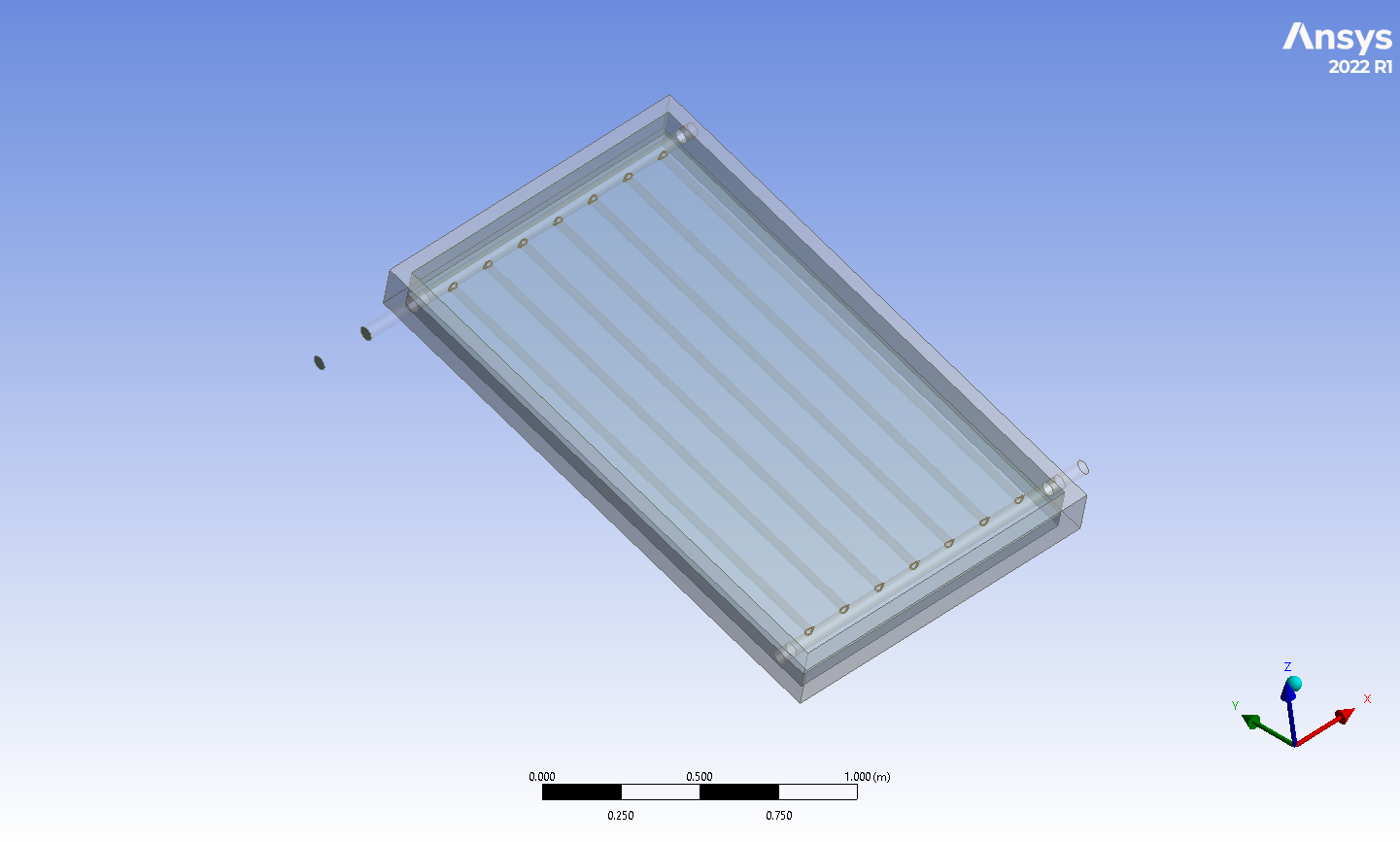
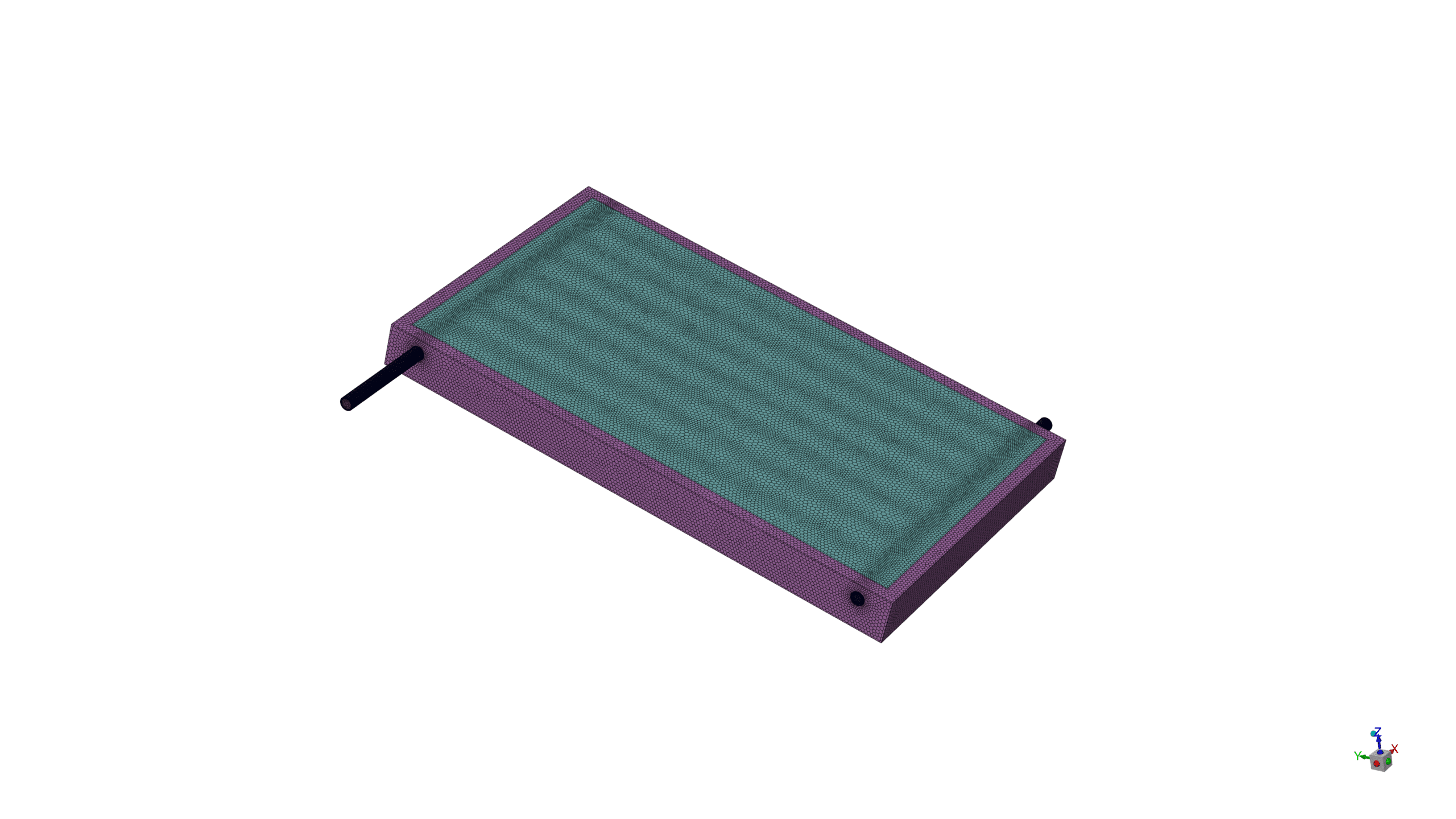
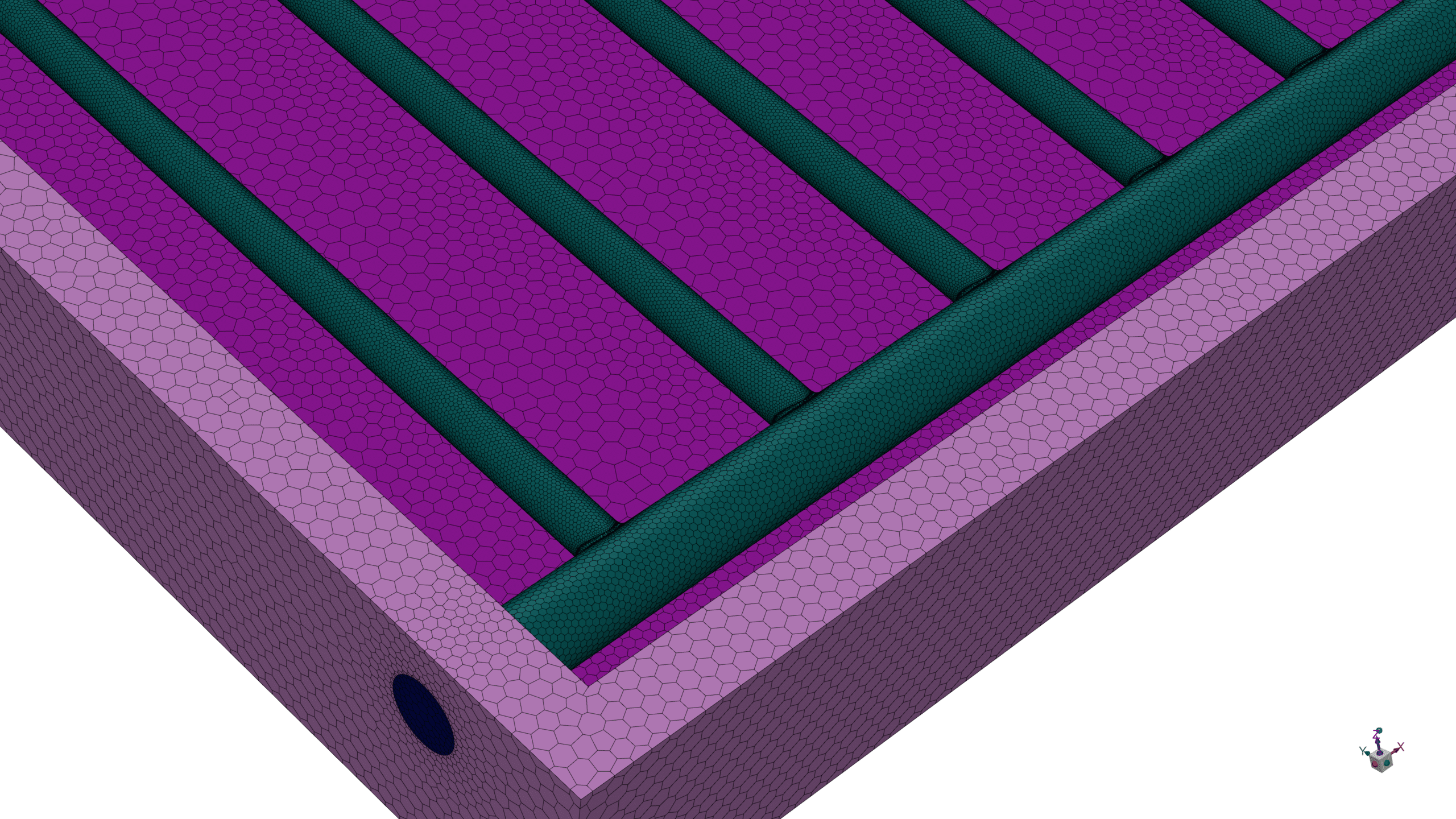
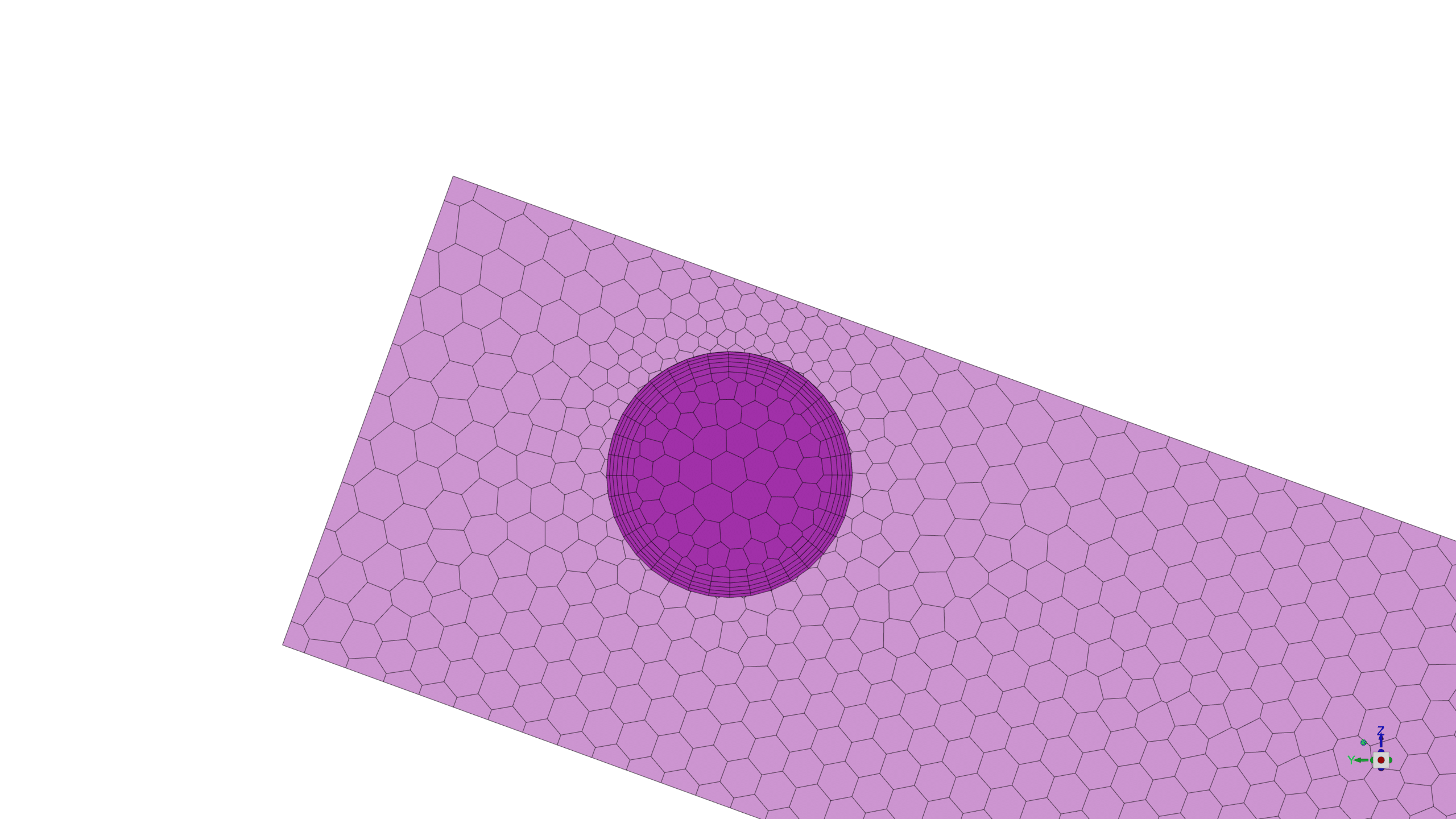
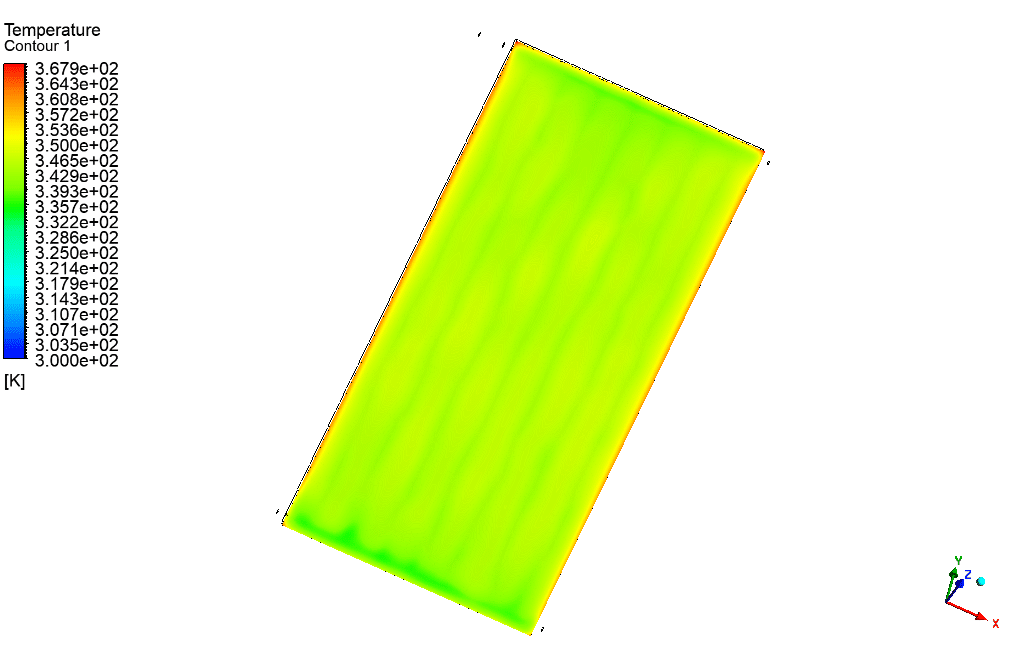
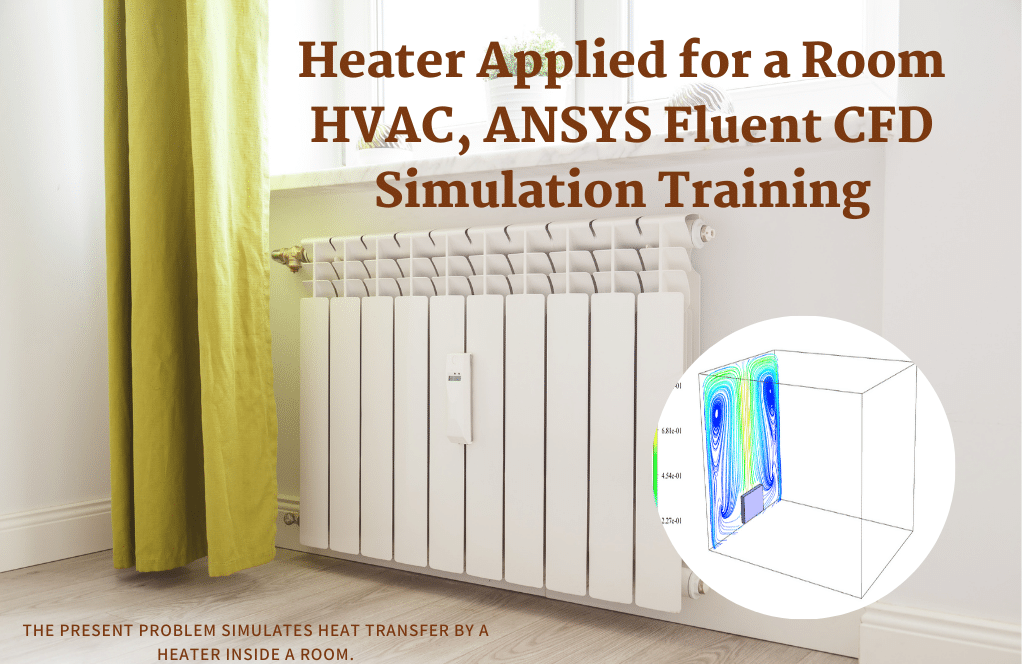

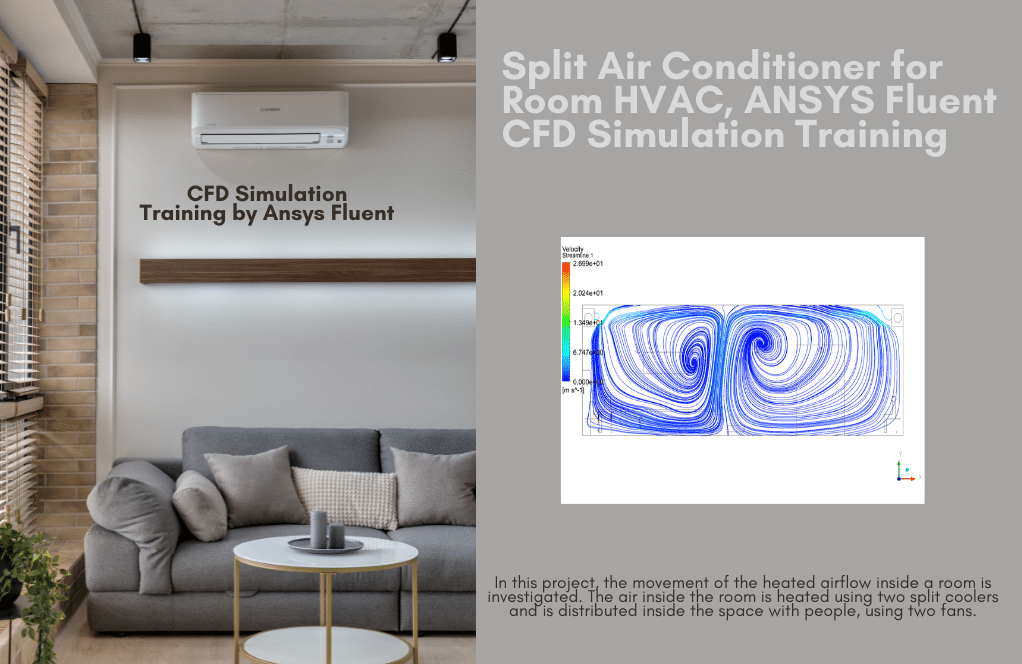
Sandy O’Hara DVM –
The hands-on experience was fantastic! The step-by-step process and clear explanation of conjugated heat transfer were impressive. It really shows how efficient solar collectors can be even with subtle changes like the tilt angle in the local climate. Well-put together and informative!
MR CFD Support –
Thank you for your positive feedback! We’re delighted to hear that you found our hands-on CFD training for the Flat Plate Solar Collector informative and effective in demonstrating the impact of design choices on energy efficiency. We appreciate your compliments on our explanations and simulation setup, and we’re thrilled we could contribute to your understanding of solar collector performance.
Shyann Moen I –
I’m really impressed by the accuracy of the simulation results for the Flat Plate Solar Collector. The setup of the radiation models and heat transfer analysis seems very comprehensive.
MR CFD Support –
Thank you for your kind words! We’re glad you found the simulation results impressive and the setup detailed. As one of our goals is to provide accurate and comprehensive training, your feedback is extremely valuable to us. If you have further queries or need more information, please don’t hesitate to ask.
Derick Hermiston –
I’ve learned so much about computational fluid dynamics from this Flat Plate Solar Collector simulation. The enhancement of starting knowledge about solar collector modeling to simulating a fully functioning design truly shows the power of CFD tools like ANSYS Fluent. Kudos to MR CFD for an insightful product.
MR CFD Support –
Thank you for your positive feedback! We’re thrilled to hear that our Flat Plate Solar Collector training module provided you with a comprehensive learning experience on solar collector simulation using ANSYS Fluent. Your success is our priority, and we’re glad to have contributed to your understanding of CFD. We appreciate your acknowledgment and look forward to serving you with more high-quality CFD learning products!
Leda Baumbach –
I’m impressed with the realistic implementation of solar radiation effects in the simulation. Great to see how different factors such as exact location and tilt angle can be incorporated to tailor the analysis.
MR CFD Support –
Thank you for your positive feedback! We strive to ensure our simulations are thorough and incorporate real-world variables to provide insightful data. Your appreciation of the realistic implementation of solar radiation effects confirms that our attention to detail is valuable. If you’re looking to adjust the simulation for other geographical locations or conditions, our training leaves you well-equipped for such modifications.
Opal O’Conner –
The comprehensive training from MR CFD on a flat plate solar collector using ANSYS Fluent helped me grasp the complexities of heat transfer quite effectively. The step-by-step guidance on how the DO radiation model was employed gave practical insights on how to optimize solar collector projects for thermal efficiency. The provided element count and detailed boundary condition settings ensure that other learners and practitioners can confidently engage with similar projects.
MR CFD Support –
We’re thrilled to hear that our Flat Plate Solar Collector CHT training with ANSYS Fluent was helpful and informative. Your strides in understanding and… applying the Discrete Ordinate Radiation Model through our course are precisely the outcomes we aim for. Thank you for highlighting the utility of the course; we appreciate your positive feedback.
Irma Orn –
This training module seems very comprehensive and practical. I’m impressed with the detailed methodology!
MR CFD Support –
Thank you for your kind words! We are delighted to hear that you find the FPSC training module detailed and practical. It’s our goal to provide in-depth CFD training that helps our customers understand complex phenomena with ease.